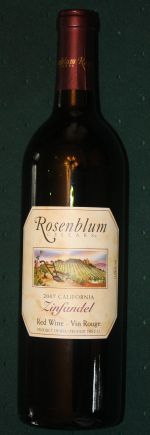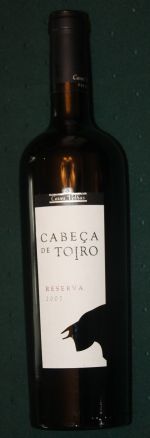| 1st Bottle |
Leyda Reserva Carmenère |
 |
| Varietal: Carmenère |
Winery/Producer: Vina Leyda Ltda |
| Type: Red Wine |
Year: 2008 |
| Cost: $13.95 |
Region: Chile |
| Food to pair: Tortellini with Alfredo sauce, Asiago and pine nuts. |
LCBO #: 00066845 |
| Remarks: Classic Reserve Carmenère comes from specific vineyards in higher elevation areas of the Rapel Valley. In these sky-bound vineyard sites, the intense heat of the day is balanced by cool temperatures at night. As a result, the fruit ripens slowly and achieves balance. Featuring aromas of plum, cedar, vanilla and smoke, this Carmenère is an excellent choice for grilled steak or even liver and onions. John’s menu: Tortellini with Alfredo sauce, Asiago and pine nuts. |
| 2nd Bottle |
Rosenblum Zinfandel |
 |
|
| Varietal: Zinfandel |
Winery/Producer: Rosenblum |
|
| Type: Red Wine |
Year: 2007 |
|
| Cost: $15.00 |
Region: California, USA |
|
| Food to pair: Pastry in brie and fig preserve. |
LCBO #: 00284653 |
|
| Remarks: Rosenblum is one of California’s Zinfandel masters. This full-throttle version serves up aromas of ripe raspberries, cherries and mocha. It is full bodied, with a smooth, plush texture and rich flavours that are well balanced by acidity, all leading to a very nice spicy-berry finish. Excellent with barbecue fare, such as grilled back ribs. John’s menu: Pastry in brie and fig preserve. |
|
| 3rd Bottle |
Kaiken Malbec |
 |
|
| Varietal: Malbec |
Winery/Producer: Montes S.A |
|
| Type: Red Wine |
Year: 2007 |
|
| Cost: $14.95 |
Region: Argentina |
|
| Food to pair: Grilled Black Angus strip loin with Huangshan mushroom and Cambodian black pepper sauce. |
LCBO #: 00058339 |
|
| Remarks: Owned by the Chilean winery, Montes, Kaiken (pronounced Kay-ken) is named for a wild goose that flies a migratory pattern between Chile and Argentina (thus the winery’s slogan: The Best from Both Sides of the Andes). This bold Malbec features attractive aromas of blueberry, black raspberry, spice box, chocolate and sandalwood. It is dry, medium bodied with fresh fruit flavours balanced by ample acidity and ripe tannins. Enjoy this fantastic value alongside grilled lamb chops with caramelized onions. John’s menu: Grilled Black Angus strip loin with Huangshan mushroom and Cambodian black pepper sauce, zucchini, and roasted white potato flavoured with rosemary olive oil. |
|
| |
|
| 4th Bottle |
Cabeça de Toiro Reserva |
 |
|
| Varietal: Touriga Nacional |
Winery/Producer: Caves Velfias |
|
| Type: Red wine |
Year: 2007 |
|
| Cost: $19.95 |
Region: Portugal |
|
| Food to pair: Chorizo with fava bean and buttercup squash stew. |
LCBO #: 00168856 |
|
| Remarks: This pretty, serious blend is built around Touriga Nacional. It opens with attractive aromas of blueberry, blackberry, plum, exotic spices and chocolate, which follow through on the palate. Dry and medium-full bodied, with ample tannic structure supporting the core of rich fruit and spice. Give this a go with braised lamb shanks or mature cheeses. John’s menu: Chorizo with fava bean and buttercup squash stew. |
|
There was a 5th bottle, complimentary learning experience from the host. It was an interesting Georgian red wine made from multiple grapes from Georgia. I couldn’t remember the exact name. Was it Alazanis Valley (2007)?
The colour was garnet red. It offered spicy notes on the nose. On the palate, it tasted a little sweeter than the usual New/Old world reds, with raspberry and cherry characters. The tannins were soft.
The grape variety of the Georgian wine is Saperavi, an acidic, teinturier-type grape variety native to Georgia, where it is used to make many of the region’s distinctive wines.
Teinturier (French: to dye or stain) is a wine term applied to grapes whose flesh and juice are both red in colour due to anthocyanin pigments accumulating within the pulp of the grape berry itself. Teinturier varieties usually make poor wines because of high level of tannins.
In most cases, anthocyanin pigments are confined to the outer skin tissue only and the squeezed grape juice of most dark-skinned grape varieties is clear. The colour of red wine comes from anthocyanins extracted from the macerated (crushed) skins over a period of days during the fermentation process.
John, (a) What is Huangshan mushroom? Is it (dried/fresh) available from T&T?
(b) Do you mean faba instead of fava bean?–YK